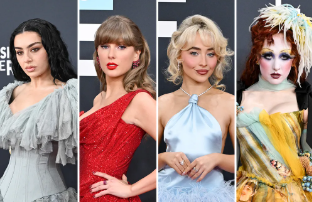Human bodies should not be turned into trends; “Heroin Chic,” “Thinspo” make dangerous resurgence
April 11, 2023
In an ever-changing society, the definition of “beautiful” is always evolving. From blonde hair to blue eyes to clear skin, people are, and always will be, making trends out of features and other things that are nearly impossible to change. The most dangerous example? Body types.
On Nov. 2, 2022, the New York Post released an article that included the sentence, “Heroin chic is back and curvy bodies are out.”
Wait, what?! Since when has a body type, the physical build of our flesh, been deigned “out?”
According to Legacy Healing, “The term ‘heroin chic’ became popular in the mid-1990s and referred to certain features in top fashion models, including pale skin, dark undereye circles, and having a thin, svelte figure.” This means that people then (and now, according to the New York Post) were romanticizing the effects of heroin, the highly addictive narcotic that’s known to cause cardiovascular issues, kidney disease, and death, according to the National Institute on Drug Abuse. The issue here is obvious: not only are people turning people’s natural bodies into fashion statements that they can criticize to no end, but now they’re romanticizing the effects of drug abuse.
That’s not all: a search for the word “thinspo” has risen in popularity as well. For those who may not know, “thinspo” is short for the term “thinspiration.” “Thinspo, at the core, is about embracing and aspiring to thinness. This message comes in many forms and can include anything from dangerous diet strategies to laxative abuse tips to community support for restricting your calories. While some suggestions vary, the harmful overarching message is straightforward: stay sick and keep letting eating disorders progress,” says Choosing Therapy.
Thinspo is what young teens are seeing all across the internet, where they have no one to explain that the idea that eating disorders are lifestyle choices are absolutely, positively wrong. It encourages teenagers, who already struggle with body image issues, to actively hurt themselves in an attempt to look like someone they’re not. According to Everyday Health, “Self-consciousness about appearance was more common among teens (73 percent of teen girls and 69 percent of teen boys) than children ages [eight] to 12; although 57 percent of the younger girls and 49 percent of the younger boys also reported self-consciousness about their appearance.”
Now, this isn’t to say that being thin is a bad thing; if you’re naturally a thin person or are someone looking to lose a healthy amount of weight for your health and happiness, then that’s great! However, the idea that one must lose weight and intentionally and continuously harm themselves in order to live up to someone’s dumb standards is just wrong, and it’s wrong for people to even consider it acceptable.
The overarching message here is clear: bodies are not ‘trends’ that we should romanticize. Children should not be expected to live up to a standard that takes the name of a drug’s harmful effects and turns it into something to envy. All bodies are beautiful, no matter thin, midsize, or fat, and it’s unacceptable to think otherwise.
















